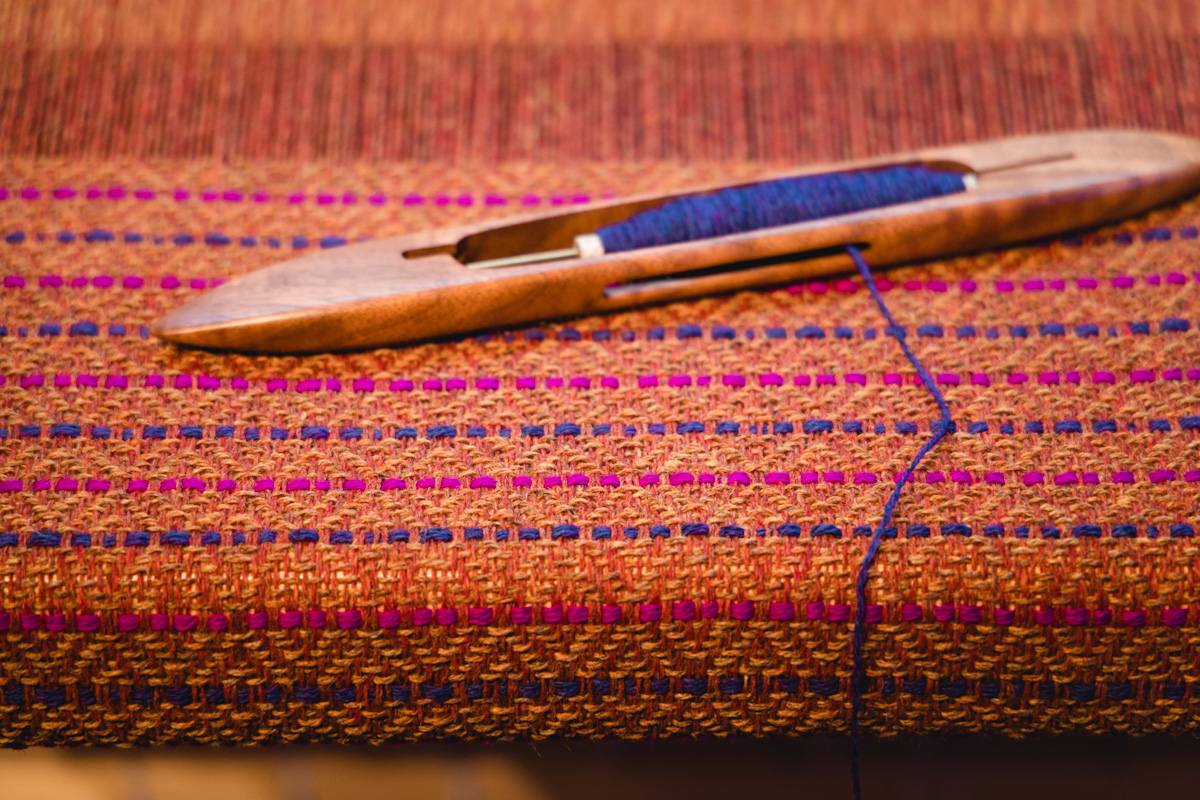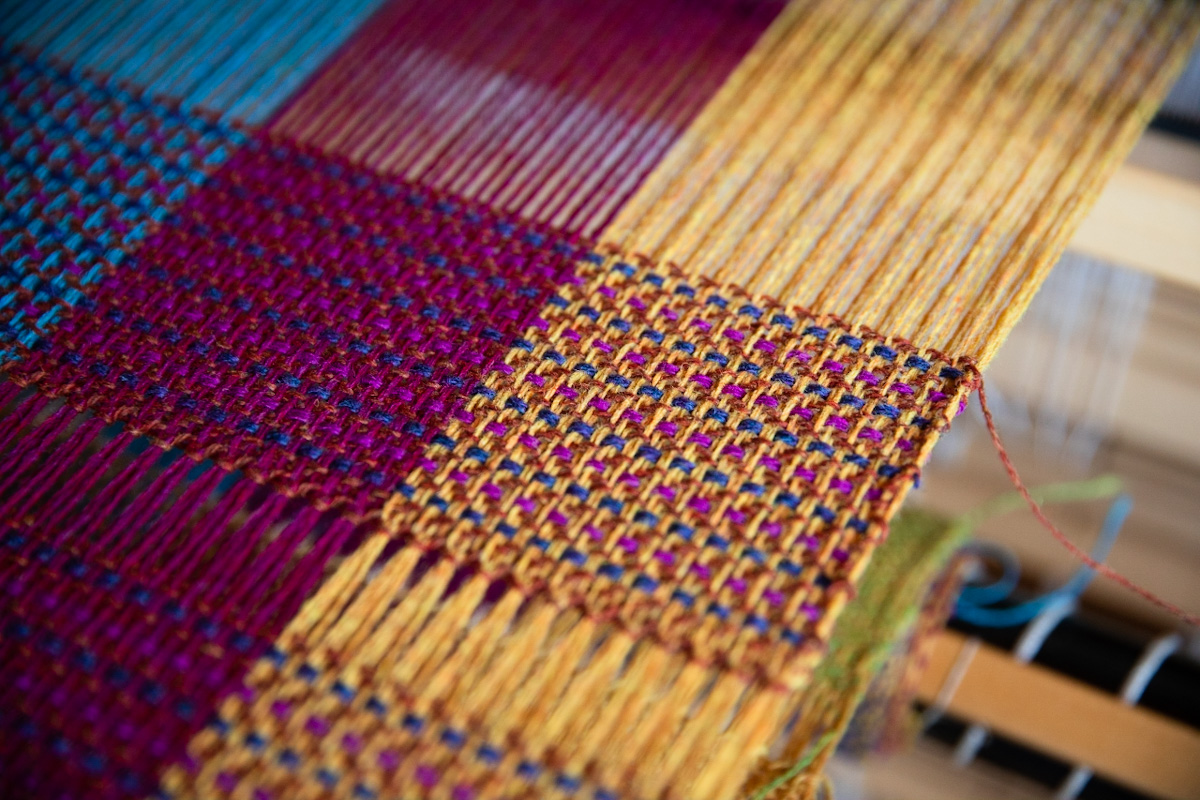Participating in the Ontario Handweavers & Spinners Weaving Certificate Unit 1 Basic Weaves was a great opportunity for me to work in-depth to weave good cloth with precise guidelines. My goal with participating in the OHS Unit 1 program was to solidify my understanding of the fundamentals of weaving and these weave structures.
Working through Unit 1 has had such an immense impact on my workflow and practice as a weaver. Previous to this program, I would design and weave projects “on the fly” and make sparse and scattered notes about what I had done. I had no system for keeping track of warps that I had wound, how many ends I wound, how long they were, or what I had planned to sett them at. I relied on my memory (!), cell phone photos, and some digital and handwritten notes. As you would expect, it was a challenge to pull together all the details of a project to organize it for publishing.
This OHS program has helped me develop a template for keeping all my weaving records, a system for tracking details, and most importantly, an ingrained habit of measuring my work on the loom, off the loom, and after wet finishing. It has made me more aware of how the cloth morphs and changes as tension is released and as it is washed. These habits will become essential as I continue to create new woven projects and aim to communicate and share design ideas with others.
Finally, working out the drawdowns by hand and the thought process that I went through to decide on how to present the drawdowns was very helpful for me. While it makes more sense to me to see weaving drafts done as “draw ups”, ultimately, I decided to use “drawdowns” because it is the convention in North America and part of what I hope to learn is how to best communicate my weaving design ideas to others in a way that they can quickly understand. So making sure I work within the accepted convention was important to me.

For my project, I decided to make a pillow that could be used for my office chair. I wanted something functional, beautiful, and large enough to display and see the texture and colour in the cloth.
All three original weave samples provided significant inspiration for this project. I loved the textural quality of the weft yarns being laid into the same shed (as in the 3-1 basket rib) and used that feature in my texture sample. I also really liked the effect of the different coloured stripes from my original colour sample and the way the basket weave effect of the accent stripes look like ribbons running through the cloth. Finally, I love the look of twill diamonds from the pattern sample and wanted to design something with an extended point twill to get bigger and more pronounced diamond shapes.
The weaving draft for this project was fundamentally based off of the original colour sample but I used an extended and modified point twill threading. I also expanded the twill sections between the accent stripes to have more of the twill diagonals showing in the cloth.
The project pillow and binders have all been delivered to the unit leader by the January 31 deadline and now, all I need to do is wait.
